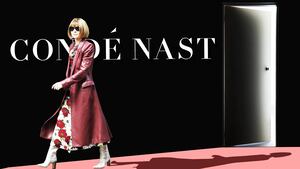In her office on the 24th floor of One World Trade Center, the 104-story skyscraper where Condé Nast is headquartered, Glamour Editor in Chief Samantha Barry is toiling, against the odds, to save her struggling enterprise.
But you wouldn’t know it from her determinedly upbeat demeanor.
“Everybody that works in media is trying to decide. You can’t do everything. You have to make your bets and where you think the growth is. And for me the monthly print schedule didn’t make sense for Glamour anymore,” Barry said, as we sat before her picture window overlooking the 9/11 Memorial Plaza.
Glamour is the 79-year-old glossy women’s monthly, once Condé Nast’s ridiculously profitable cash cow, that Barry and her mentor, Vogue doyenne and Condé Nast Artistic Director Anna Wintour, have decided to kill as a print-on-paper magazine, except for a special issue two or three times a year.
In our conversation, Barry laughingly rejected the role of Glamour’s executioner—or, less violently, its undertaker—and clearly preferred the euphemism “evolved” concerning the print magazine’s abrupt demise.
“Do I look like Wednesday Addams right now here in my outfit?” she demanded, referring to her white-collared black Zara blouse accented by faux-diamond buttons; it was an allusion to the creepily prim Addams Family character, a dead-eyed pigtailed girl who raises spiders, buries live cats, and plays with a collection of headless dolls.
“Here’s the thing. I stand behind my decision. I know it’s the right one,” Barry said, explaining why she has not buried the bad news, but instead has done the opposite: aggressively selling the potential upside of print Glamour’s death. “I wanted to be super-open with everybody. It’s not like I’m making this decision to evolve the brand and I’m not going to have that conversation with people—because I don’t think that’s fair.”
Barry added: “It’s a brand that people are very close to. And I’m the editor in chief. There’s an onus on me to go out and explain to people why this is the way we’re evolving. I’m not going to sit here on the 24th floor and make a decision and say, ‘That’s it. We’re not going to talk to anybody.’ That’s just not my style.”
Glamour in print is the latest victim among two dozen American glossies that the Newhouse family-owned company, which also publishes Vanity Fair and The New Yorker, has whacked over the past two decades. It’s a form of editorial euthanasia that accelerated with the financial meltdown of 2008-2009 and the digital onslaught that has made dead-tree publishing an increasingly dicey business.
Indeed, Condé Nast’s domestic operations reportedly hemorrhaged $120 million in 2017 and was aiming to cut those losses, mainly through belt-tightening, to $60 million this year.
Meanwhile, luxury, fashion and beauty brands continue to reduce their advertising budgets for U.S. print magazines, slashing their ad spending by $400 million in 2017 alone, from $6.5 billion in 2016 to $6.1. billion last year, according to the Association of Magazine Media.
Traditional glossy advertisers are increasingly opting instead to spend on precisely targeted Facebook and Google ads, on advertising in emerging markets such as Eastern Europe and China, and on social media influencers boasting millions of Instagram followers—digital fashion celebs like The Blonde Salad and Something Navy that are paid endorsers for the brands and offer “the façade of authenticity,” as Washington Post fashion critic Robin Givhan puts it.
It’s in this pitiless environment that Glamour’s final issue—dated January 2019 and featuring Aquaman actress Amber Heard on the cover (“Silence is complacency,” Johnny Depp’s ex says about sexual and other assaults on women)—hit newsstands on Tuesday.
As for the 2.2 million print subscribers that Glamour claims, the plan is to offer them similar Condé Nast mags such as Vogue or Allure for the duration of their subscriptions.
Barry’s January 2019 editor’s letter—a paean to “hope and optimism”—doesn’t mention the gloomy news.
Yet the 37-year-old editor in chief, CNN’s former global social media director who was hired to helm Glamour a year ago despite zero magazine experience, is at pains to frame the deep-sixing of the print edition as an opportunity to “evolve the brand” as a major force on video, digital, and social media platforms, Barry’s areas of expertise.
Barry and Wintour personally announced the death to the staff of around 40 last week, minutes before the the New York Times broke the news. Barry said that when she originally wrote the detailed memo last year that earned her Wintour’s support for the top editor’s job, she didn’t propose ending the print edition.
“It was not a part of the plan I pitched for Glamour at the time, but huge growth and expansion in digital, social and video absolutely was,” she said.
Still, when she began thinking seriously about pulling the trigger more than a month ago, “Anna was incredibly supportive of the plan I laid out, and continues to be,” Barry told me. “I shared what I had learned over the last year about our audience and she understood why this made sense for the future of the brand… She's been a wonderful sounding board for me since I've been here.”
Wintour returned the compliment in a statement to The Daily Beast: “Sam has already achieved so much with Glamour, including the title's most successful Women of the Year event, and I am thrilled about the direction she is taking it in. She has brought in many new voices to the site and believes in empowering all women, from her own team to the title's millions of dedicated readers… Her Glamour has built a strong community, one that extends well beyond events and across all platforms."
Barry declined to speculate on a possible all-digital future for Vogue or, for that matter, for any of the other Condé Nast titles that will likely confront the same decisions as Glamour.
For her, what is important is “investing in video growth, investing in digital growth, and investing in not only where there’s a growing audience, but honestly where there’s growing revenue for us.”
Alas, online advertising generally brings in a small fraction of the revenue that print ads produce. Condé Nast says the magazine’s online readership has increased by 12 percent—to 6.3. million monthly—under Barry’s leadership, while its YouTube Channel subscriptions have jumped by more than 110 percent, to 1. 6 million.
Glamour’s claim of 20 million monthly online visitors is based on an aggregation of readers who browse the magazine’s website, YouTube page, Facebook and social media feeds.
“Best-case scenario is that we continue to grow on all of those platforms,” Barry explained. “We continue to bring in new advertisers”—for example, Mercedes Benz, a so-called “non-endemic” sponsor of Glamour’s recent Women of the Year Awards extravaganza—the moneymaking annual event that was launched in 1990 and became a hallmark of Barry's well-regarded predecessor Cindi Leive.
“Best-case scenario: We start winning lots of awards for our journalism that I’m really proud of,” Barry continued. “And the ultimate one is that more and more women in America look to us as their women’s empowerment brand.”
Indulging a flair for salesmanship, Barry went on: “It’s the place that they come to get their content, to feel good about themselves in terms of fashion and beauty, to be titillated and entertained in terms of our celebrity coverage, but also to come away with that overarching message that we’re all about empowering women and telling women’s stories and listening to women.”
Almost as an afterthought, Barry added, with a laugh: “And we make loads of money!”
Needless to say, Barry’s hope and optimism are being greeted in some quarters by icy skepticism.
“It’s hard for me to read anything good about that announcement that Glamour is ending the print edition,” Washington Post fashion critic Givhan said. “To say that you’re ending the print edition and moving to totally digital—they’ve had in general [at Condé Nast] such a bad history on the digital side. They came so late to it. It has always felt like such an afterthought.”
Givhan added, however, that Vogue and especially Teen Vogue, which killed its print edition last year and reaches younger digital-savvy consumers online, have raised their digital game in recent years.
Meanwhile, Givhan applauds Glamour’s plans to offer its content for free—unlike Condé Nast titles such as Vanity Fair and the New Yorker—and, at least for the foreseeable future, not require readers to brave a metered paywall.
“How could they? That would just seem awfully presumptuous,” Givhan said, noting that Glamour’s fashion and lifestyle content, peppered with politics and social consciousness, is probably not distinct or exclusive enough to induce readers to pay online.
“I don’t think you can call that a massive win or a great opportunity, because the question becomes ‘So what do you have that the other digital brands don’t have?’,” said Steven Watson, director of the Stack Magazines subscription service that provides customers with access to innovative, sometimes quirky independent titles that they wouldn’t ordinarily find on their neighborhood newsstands.
“Glamour has to work really, really hard to show why it’s any different from anything else that you see in your Facebook feed,” Watson added.
The demise of American Glamour’s print edition, meanwhile, duplicated the fate that also befell the British version of Glamour last year, when it went all-digital.
“It’s not surprising that another of these big prestige titles is going online only,” Watson said. “But I find it hard to grieve for magazines when they’re not giving people a reason to buy them. This is not me saying I could do a better job. It’s just that the model has so fundamentally changed. The conditions around these magazines have changed, and the magazines, which used to be money-making machines, haven’t been able to keep up.”
Barry, nearly a year into her job, is doing her best to keep up.
“I don’t think you know, until you’re an editor in chief at Condé Nast, how much of your time is spent outside working hours being out and representing the brand. So, what that means is being out Monday and Tuesday and going to advertiser things, or a fashion thing or beauty thing or a dinner. There was definitely a moment—I think it was four months in—where I said I need Wednesday nights to myself. I need to go to my friend’s house, eat a meal and watch Real Housewives of New York.”







